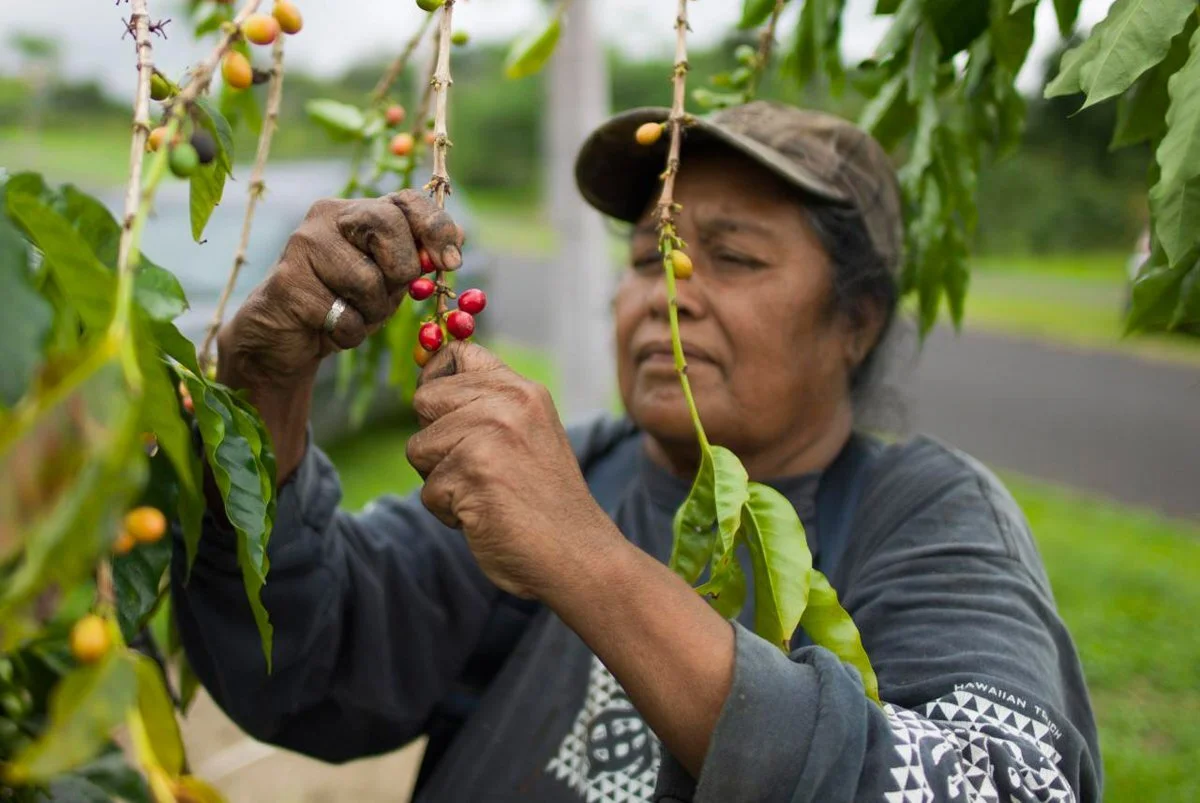
There are few coffee experiences as rich and memorable as a cup of authentic Kona coffee. Cultivated on the volcanic slopes of Hawaii’s Big Island, this luxurious brew is celebrated around the world for its smooth flavor, unique aroma, and deep cultural roots. Yet, as its fame has grown, so too has the confusion around what’s truly “real” Kona coffee. This guide will help you understand what makes Kona coffee so special, how to identify genuine beans, and why it’s worth every sip.
When it comes to pure Kona coffee, authenticity is everything. Many products labeled as “Kona” are actually blends containing only a small fraction of genuine Kona beans. To experience the true richness and flavor that this region is known for, it’s essential to look for coffee that is 100% sourced from the Kona district of Hawaii. Pure Kona coffee offers a taste of the island’s volcanic soil, tropical climate, and meticulous farming tradition — all in one perfectly balanced cup.
What Makes Kona Coffee So Exceptional?
The secret to Kona coffee’s signature taste lies in its geography. The narrow Kona Coffee Belt stretches along the slopes of Mauna Loa and Hualālai volcanoes. This unique region offers the perfect balance of sunshine, afternoon rain, and mineral-rich volcanic soil. The result? Beans that develop slowly, allowing them to absorb complex flavors and natural sweetness.
Every step in the process — from hand-picking ripe cherries to careful drying and roasting — is done with precision. This labor-intensive approach contributes to the smooth, low-acid profile that Kona coffee lovers cherish. Each sip delivers a harmonious blend of chocolatey richness, floral undertones, and a subtle fruitiness that lingers beautifully.
How to Identify Authentic Kona Coffee
If you want the real deal, always look for labels that clearly state 100% Kona Coffee. This means every bean in the bag was grown in the Kona district. Be cautious of terms like “Kona Blend,” “Kona Roast,” or “Kona Style,” as these often contain only a small percentage of true Kona beans mixed with cheaper varieties.
Here are a few tips to help you buy with confidence:
-
Check the label carefully: Genuine Kona coffee will proudly display its origin.
-
Look for estate-grown or single-origin beans: This ensures quality and consistency from a single farm.
-
Beware of low prices: True Kona coffee is rare and costs more due to limited supply and labor-intensive harvesting.
When in doubt, buy directly from trusted Hawaiian farms or certified roasters that guarantee authenticity. This way, you’re not just getting coffee — you’re getting a taste of Hawaiian heritage.
Why Pure Kona Coffee Costs More
The price of Kona coffee often surprises first-time buyers, but it reflects its rarity and craftsmanship. The Kona district represents only a small portion of Hawaii’s farmland, making genuine beans scarce.
Additionally, every bean is hand-picked to ensure only ripe cherries are harvested — a process that demands time and care. Small-scale farmers handle each stage of production, from growing to processing and roasting, maintaining strict quality standards. The result is a premium product that stands far above mass-produced blends.
When you pay for pure Kona coffee, you’re investing in authenticity, sustainability, and an unforgettable coffee experience.
Understanding Kona Coffee Grades and Roasts
Kona coffee is graded based on size, shape, and quality. The top grades — such as Extra Fancy, Fancy, and Prime — indicate beans with exceptional consistency and minimal defects. These higher-grade beans often deliver the most refined and balanced flavors.
Roast level also plays a crucial role in your coffee experience:
-
Light Roast: Bright, delicate, and floral with a hint of citrus.
-
Medium Roast: Balanced and smooth, showcasing Kona’s natural sweetness.
-
Dark Roast: Bold, rich, and slightly smoky, perfect for those who enjoy depth and intensity.
If you’re new to Kona coffee, a medium roast is often the best starting point to appreciate its signature flavor profile.
How to Brew Kona Coffee for the Best Flavor
Once you’ve secured your authentic beans, the brewing process will make or break your cup. Here’s how to bring out the best in your Kona coffee:
-
Use whole beans and grind fresh before brewing to preserve aroma and flavor.
-
Use clean, filtered water heated between 195°F and 205°F.
-
Try pour-over or drip methods for clarity and balance.
-
Store beans properly in an airtight container away from light and moisture.
Because Kona coffee is naturally smooth and low in acidity, it shines in brewing methods that emphasize clarity and sweetness rather than intensity.
Sustainability and Tradition in Every Cup
Kona coffee farming isn’t just about taste — it’s about community and preservation. Many Kona farms are family-owned, with generations of growers maintaining sustainable farming methods that protect the land. By purchasing authentic Kona coffee, you’re supporting small Hawaiian farmers who continue a proud agricultural tradition rooted in respect for nature.
Final Thoughts
In the end, Kona coffee isn’t just a drink — it’s an experience. Choosing pure Kona coffee means savoring a product born of volcanic earth, ocean air, and the dedication of local farmers. From the first aroma to the last sip, it offers a flavor journey unlike any other in the world.
